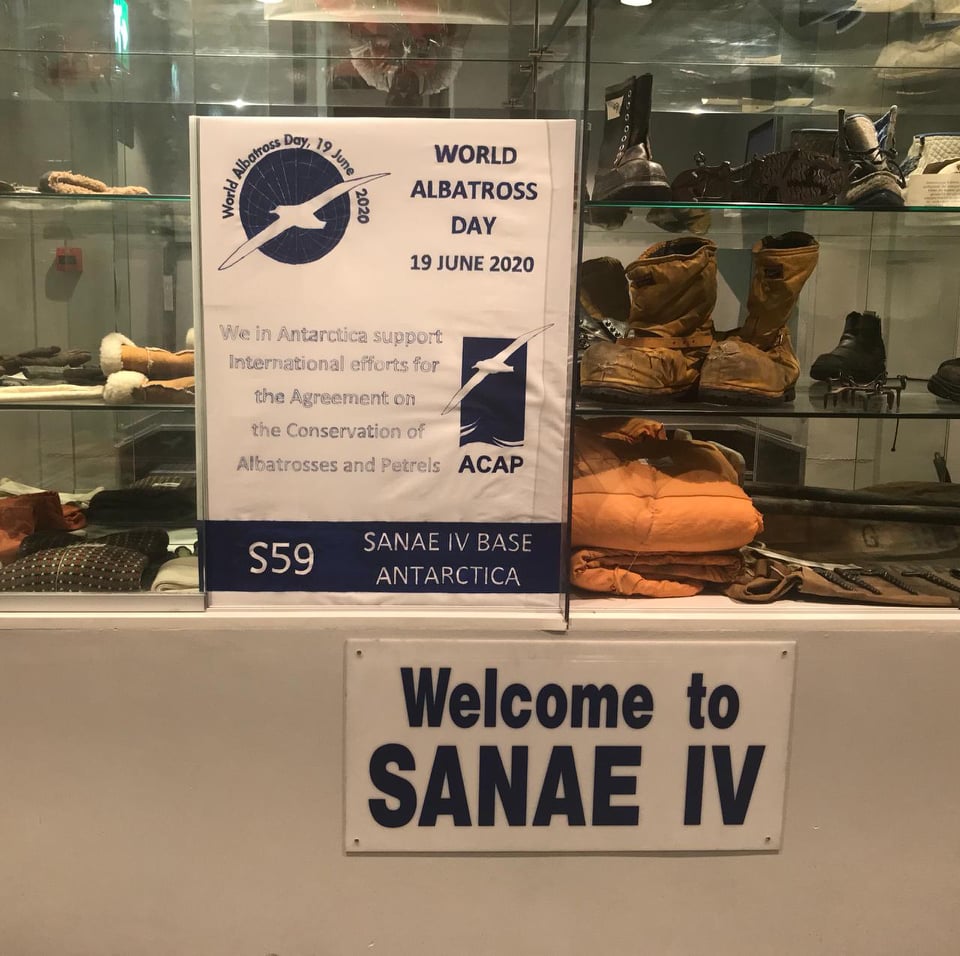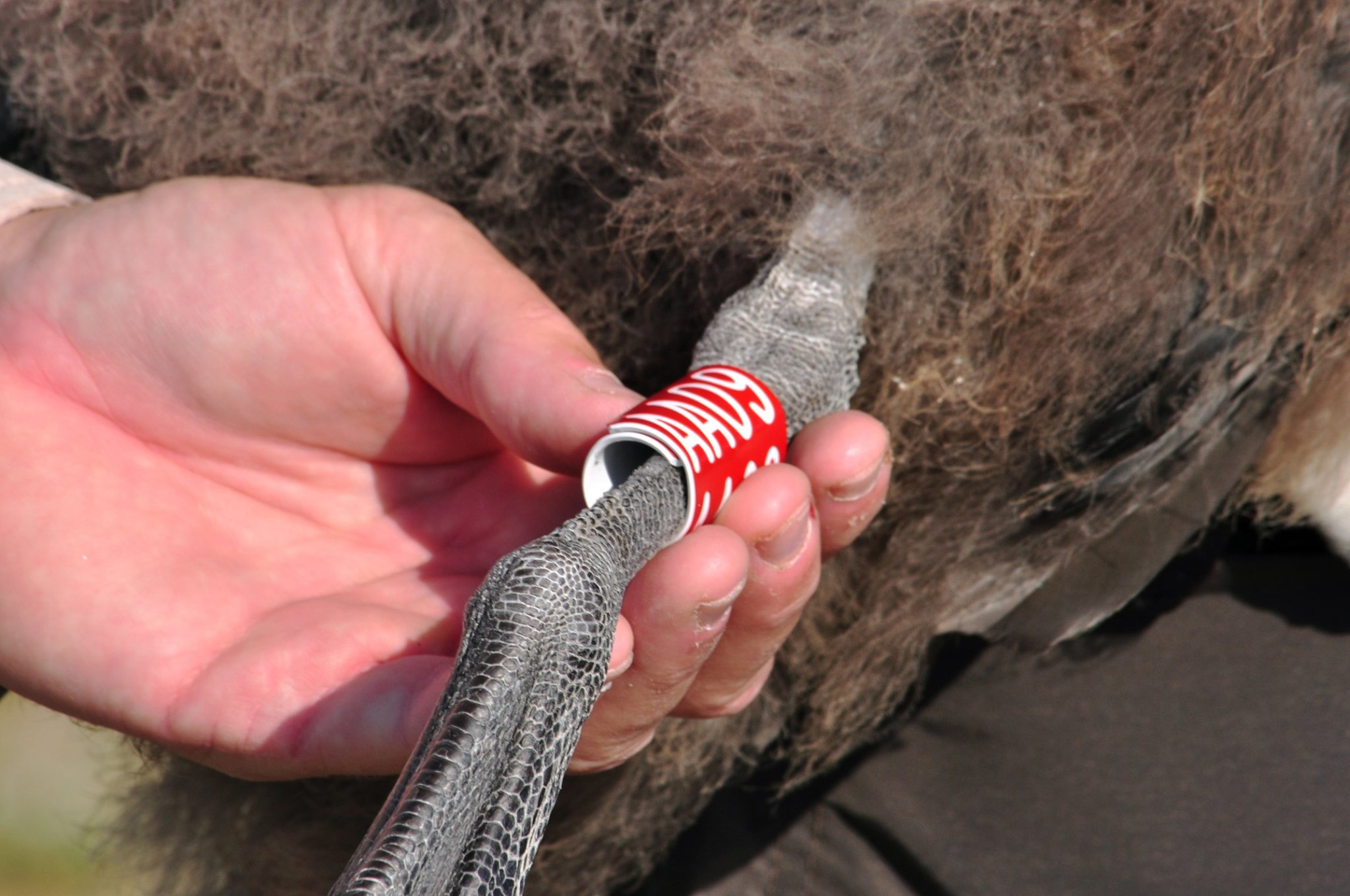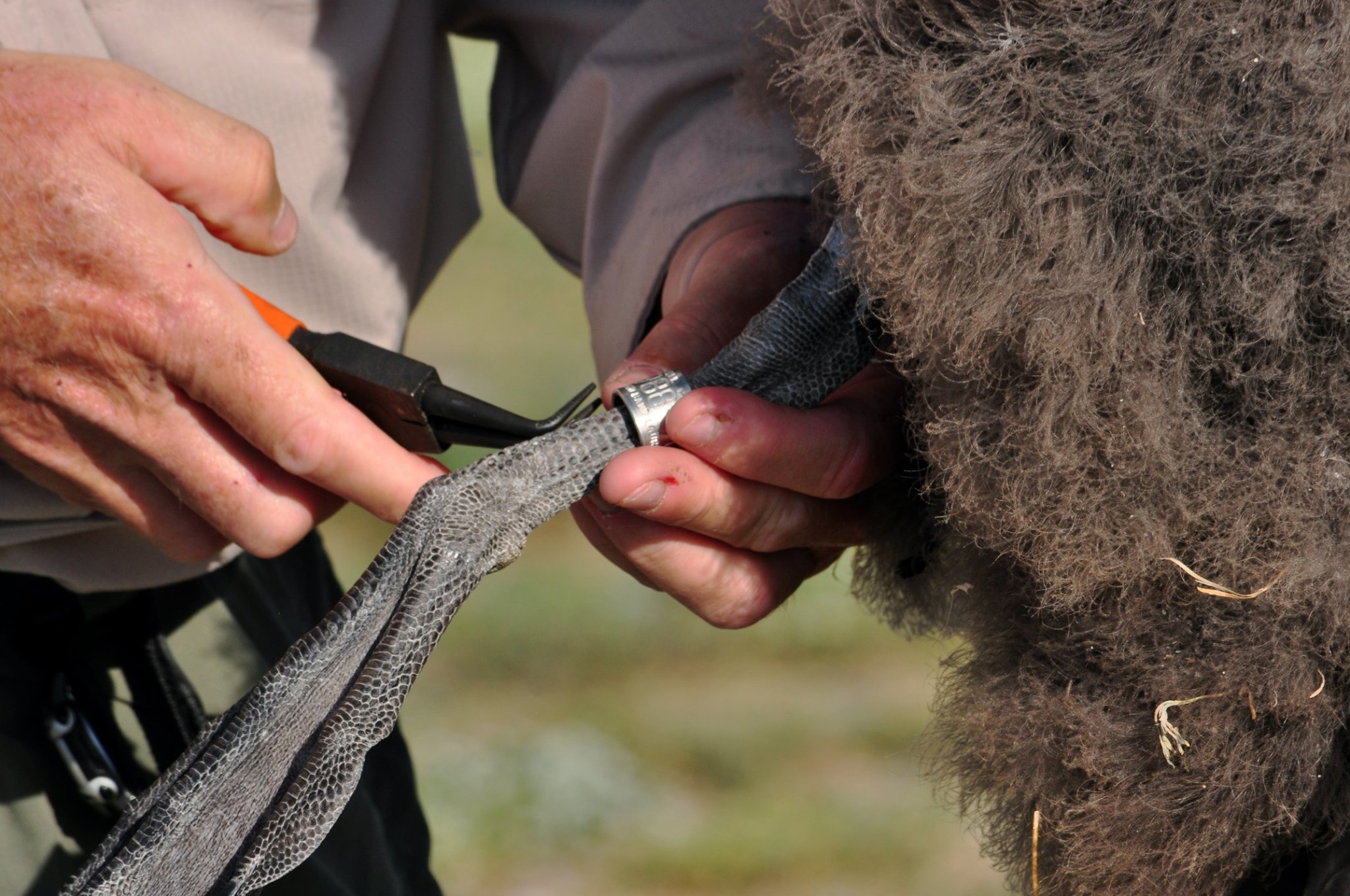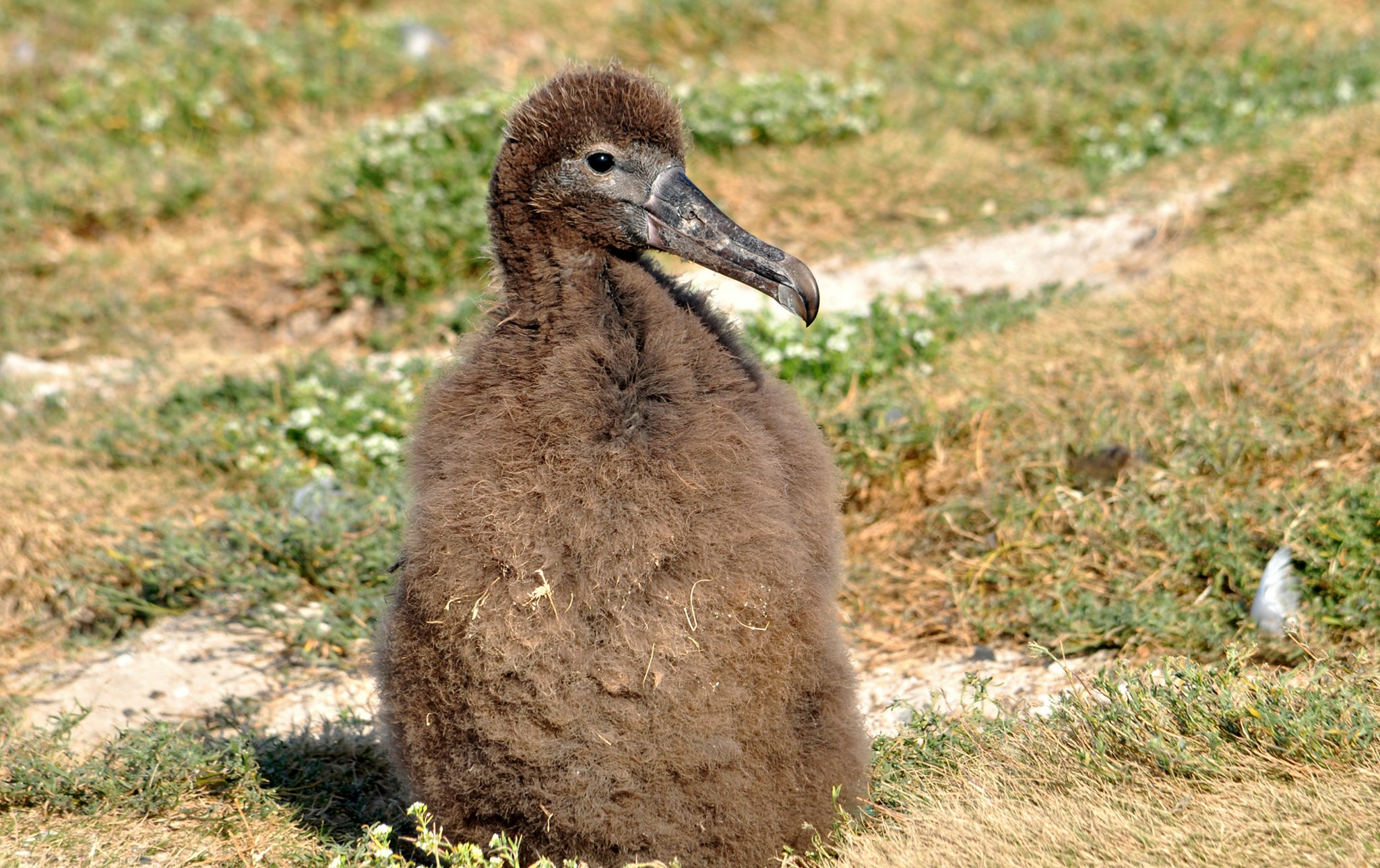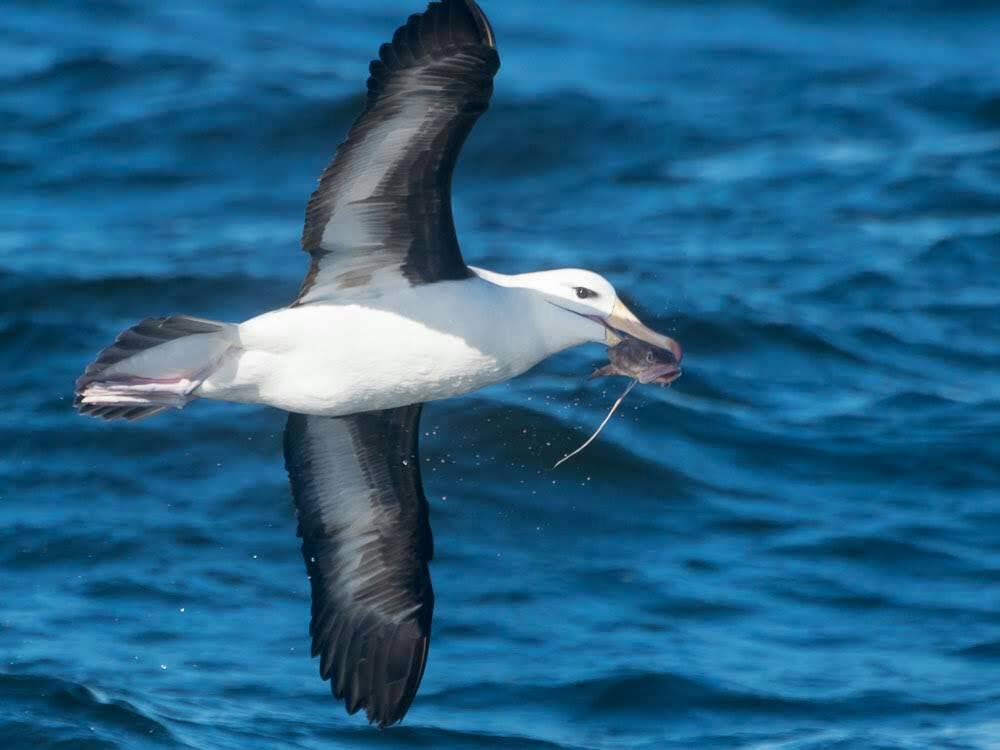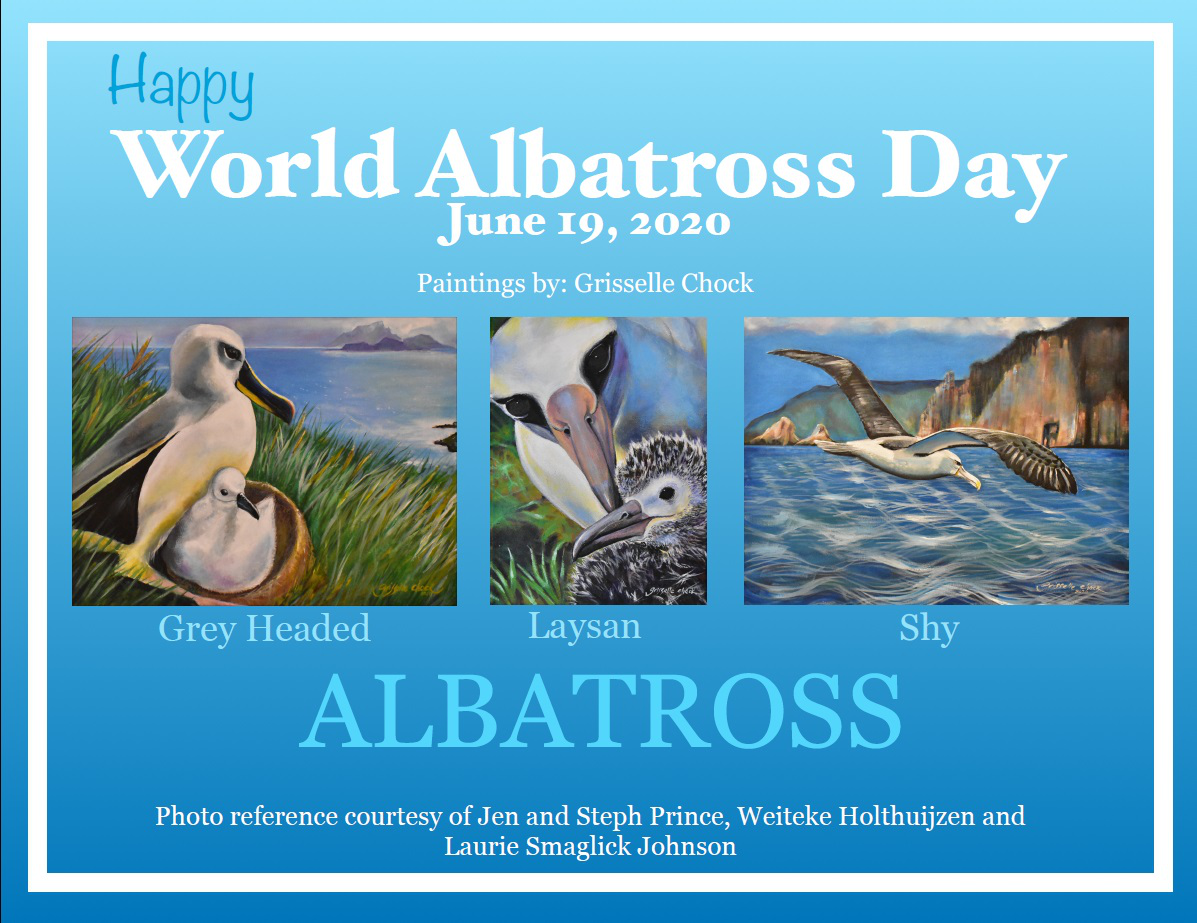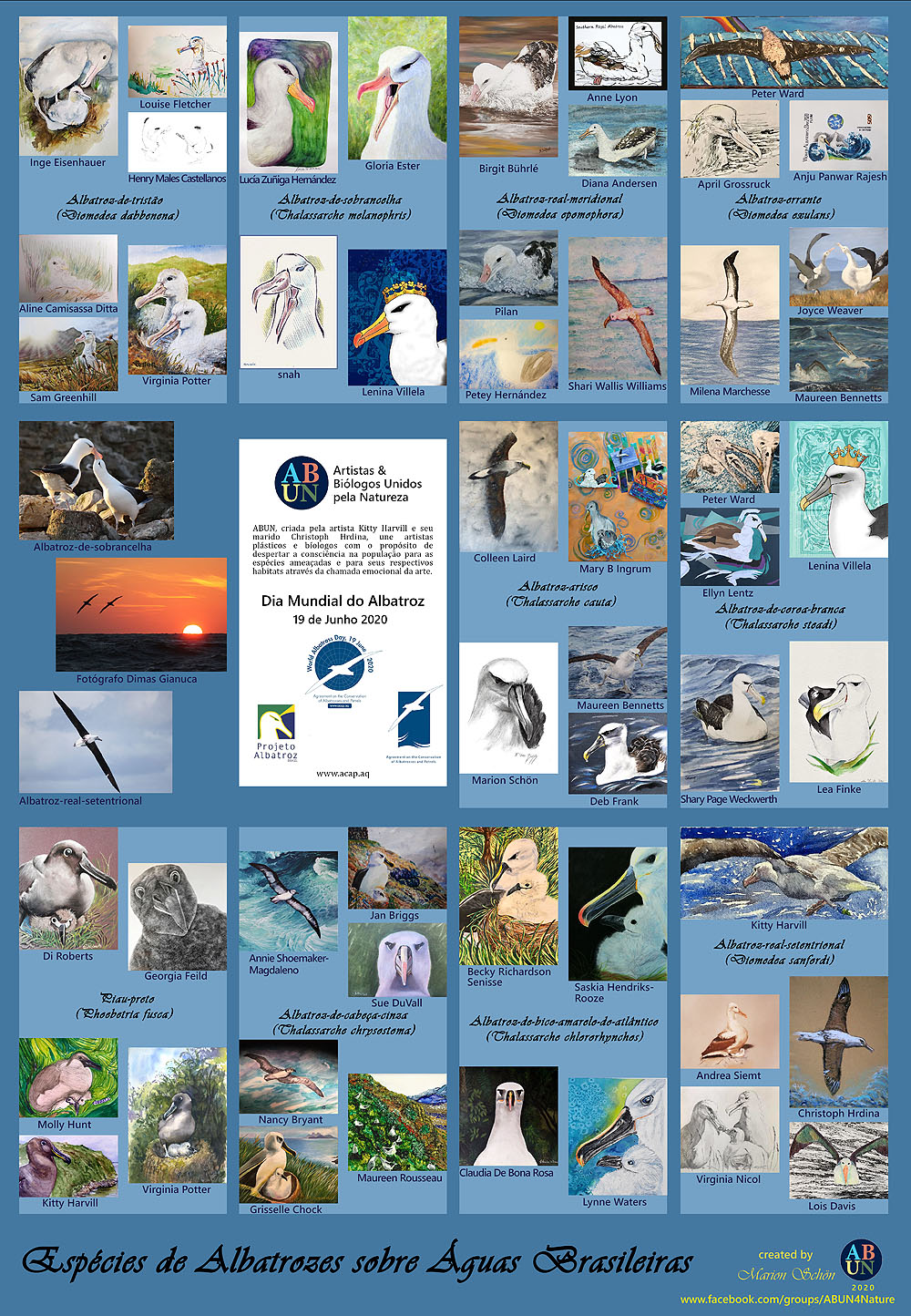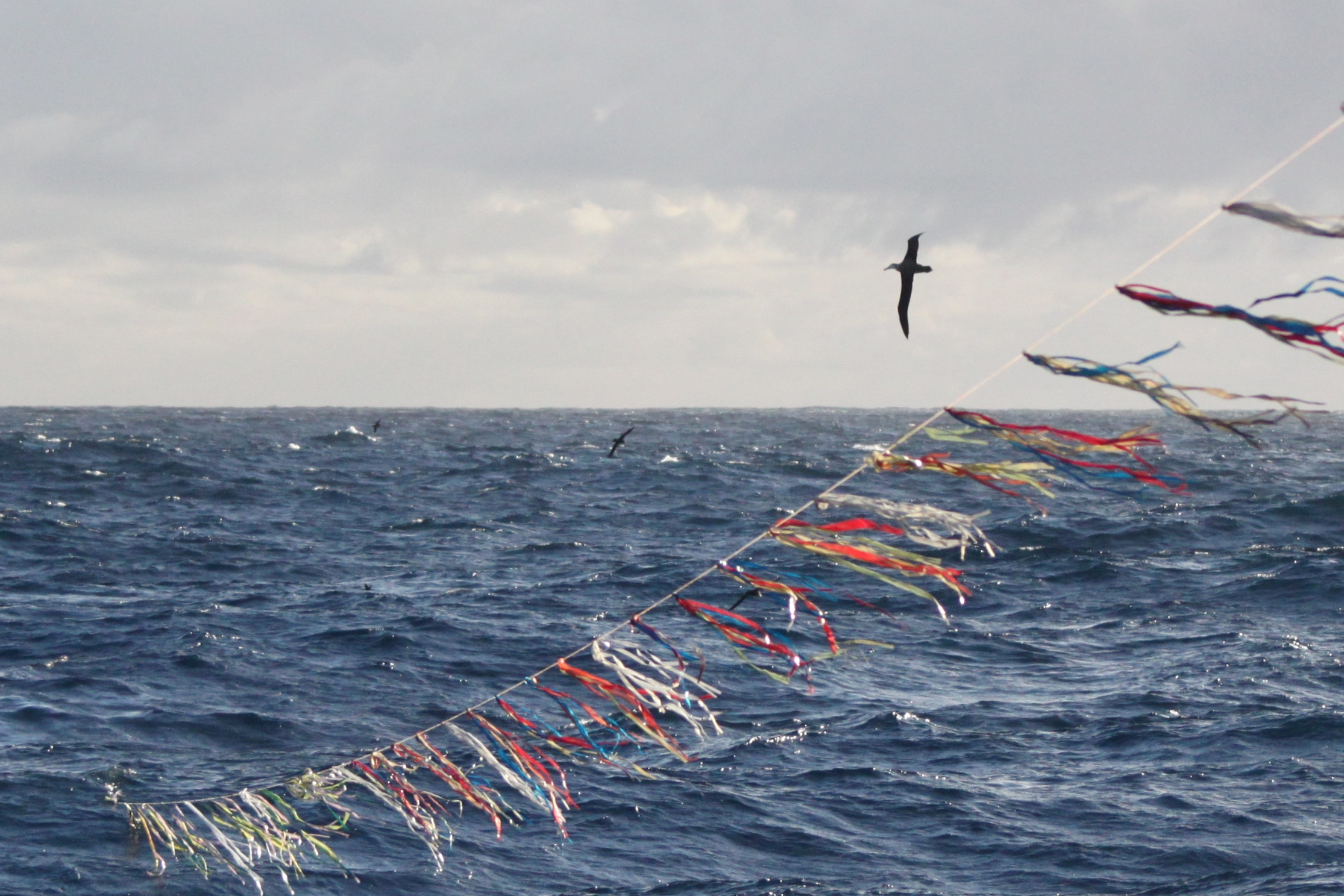
A bird-scaring line with its hanging streamers keeps albatrosses and petrels away from the hooks on a Brazilian longliner
Photograph by Dimas Gianuca, Albatross Task Force - Brazil
Sebastián Jiménez (Laboratorio de Recursos Pelágicos, Dirección Nacional de Recursos Acuáticos, Montevideo, Uruguay) and colleagues have published in the journal Biological Conservation on the effectiveness of bird-scaring lines and night setting in reducing seabird mortality during pelagic longlining “Major reduction in global bycatch could be achieved, if [these] measures are widely applied.”
The paper’s abstract follows:
“Bycatch in pelagic longline fleets remains a considerable source of mortality for threatened seabirds. Despite efforts to implement mitigation measures, the effectiveness of their application across multiple fleets and wide spatio-temporal scales remains poorly understood. We analyse about 15,800 sets and 36.4 million hooks observed during 583 trips aboard 132 vessels from five pelagic longline fleets (Brazil, Portugal, South Africa, Uruguay and foreign charter-vessels) operating in the south Atlantic and southwestern Indian Oceans (2002–2016) to assess the large-scale effect on bycatch rates of the implementation over time of night-setting and Tori (bird-scaring or streamer) lines. There was a highly significant decrease in standardised bycatch rate from 2002 to 2008 to 2009–2011 and a further reduction in 2012–2016, as consequence of an increased use of mitigation measures. This reduction on fleet-wide bycatch rates temporally coincides with the progressive implementation of mitigation measures in the two relevant Regional Fishery Management Organisations. Night-setting significantly reduced bycatch rates under all conditions, particularly for albatrosses. Surprisingly, bycatch rate during daylight was higher when Tori lines were deployed. Inconsistencies in Tori line deployments, entanglements with the fishing gear and the non-use of this measure with low seabird abundance may explain this pattern. At night, relative moon illumination increased bycatch rate, especially of petrels, but Tori lines significantly reduced seabird bycatch. Our results imply that a major reduction in global bycatch of threatened seabirds could be achieved, if night setting and Tori lines are correctly applied and extensively implemented by fleets operating south of 25°S.”
Reference:
Jiménez, S., Domingo, A., Winker, H., Parker, D., Gianuca, D., Neves, T., Coelho R. & Kerwath, S. 2020. Towards mitigation of seabird bycatch: large-scale effectiveness of night setting and Tori lines across multiple pelagic longline fleets. Biological Conservation doi.org/10.1016/j.biocon.2020.108642.
John Cooper, ACAP Information Officer, 22 June 2020

 English
English  Français
Français  Español
Español 
